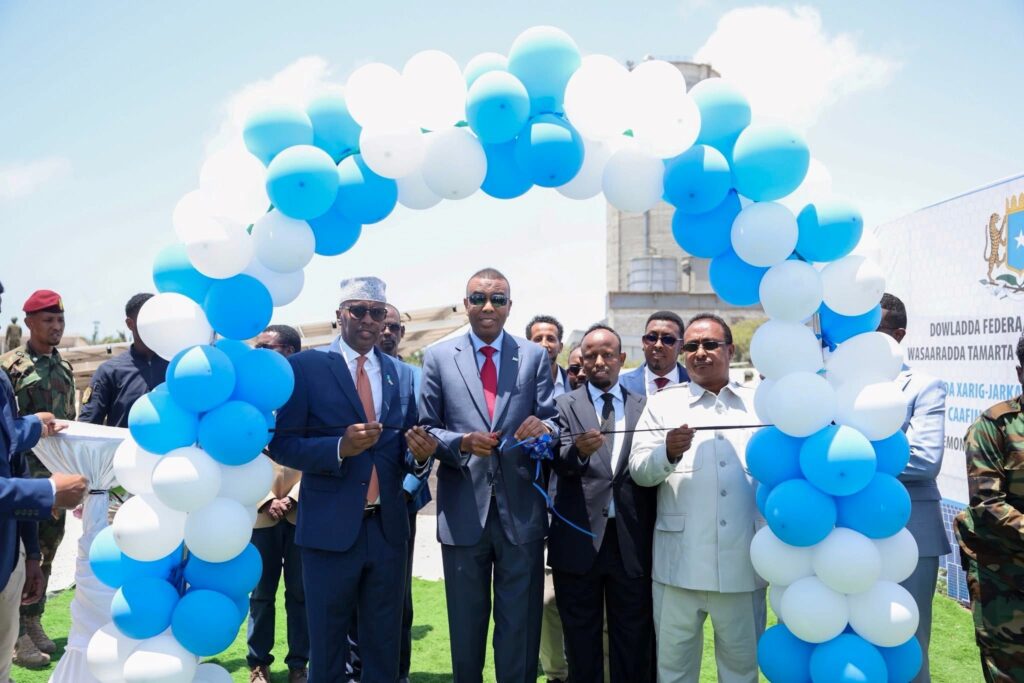The Horn of Africa, a region that includes Somalia, Ethiopia, Djibouti, and Eritrea, continues to grapple with one of the most pressing challenges of modern development: access to affordable and reliable electricity.
While governments across the region are launching initiatives to expand energy access, the sector still faces immense obstacles linked to cost, infrastructure, and sustainability.
Details About Somalia’s Free Electricity Project.
In Somalia, Prime Minister Hamza Abdi Barre recently launched a landmark free electricity project aimed at powering 150 public health centers across several regions.
The initiative, which relies on renewable and eco-friendly energy sources, reflects the government’s commitment to improving essential services such as healthcare and education.
Barre emphasized that stable, quality electricity is a long-awaited necessity for Somali citizens, with the project expected to provide sustainable energy to critical public facilities.
Why Electricity is a Heavy Burden in Somalia?
Yet, Somalia’s electricity sector remains one of the most expensive globally.
The cost of one kilowatt-hour in local markets can reach around 40 US cents, a staggering price compared to the country’s average daily income of $1.50 per person.
This pricing structure makes electricity a heavy burden for most households, limiting access and slowing down economic and social development.
But how about the other countries in the Horn of Africa?
Let’s explore together !
Ethiopia: Expanding Access through Hydropower
Ethiopia, in contrast, has positioned itself as an energy hub in the Horn of Africa.
The country relies heavily on hydropower, with the Grand Ethiopian Renaissance Dam (GERD) as its most ambitious project.
Once fully operational, GERD is expected to generate more than 6,000 megawatts, potentially turning Ethiopia into a net exporter of electricity to neighboring countries.
However, Ethiopia also faces challenges.
Seasonal variability in rainfall and the impacts of climate change create uncertainty in hydropower generation.
Additionally, political tensions with downstream countries over GERD highlight how electricity can also become a regional geopolitical issue.
Djibouti: Transitioning to Renewable Energy
Djibouti has made significant strides toward renewable energy adoption.
With limited natural resources, the country depends on imports from Ethiopia for much of its electricity but is investing in geothermal, wind, and solar projects to reduce reliance.
Djibouti’s strategic goal is to become the first African nation powered entirely by renewable energy, aiming to achieve full transition within the coming decades.
Despite these ambitions, energy affordability remains a challenge.
High operational costs and limited local generation capacity make electricity expensive for ordinary citizens, though long-term investment in renewables could reduce costs in the future.
Eritrea: Limited Access and High Costs
Eritrea’s electricity sector is among the most underdeveloped in the region.
With much of the population lacking reliable access to the grid, the country relies on small-scale diesel generators and limited renewable projects.
High fuel import costs make electricity unaffordable for many households, while the lack of significant investment hampers broader infrastructure development.
Click here to explore more about energy in the Horn of Africa.
Regional Outlook: Toward Green Energy Solutions
Across the Horn of Africa, electricity remains both a developmental opportunity and a major constraint. High costs, limited coverage, and outdated infrastructure hinder economic growth and restrict access to basic services.
Yet, there is also a growing recognition of the role of renewable energy—particularly solar and wind—in bridging the gap.
Somalia’s decision to power public health facilities with a new free electricity project that is based on green energy is a positive step.
Ethiopia’s hydropower ambitions, Djibouti’s renewable targets, and Eritrea’s potential for solar expansion all show that governments are seeking diverse solutions to address the region’s energy deficit.
Will the Horn of Africa Make it?
The electricity challenge in the Horn of Africa is not just about powering homes and businesses—it is about enabling healthcare, education, and economic development.
While progress is being made through projects like Somalia’s health-sector electrification and Ethiopia’s GERD, affordability and sustainability remain central hurdles.
Collaborative regional strategies, investments in renewables, and reforms to lower energy costs will be crucial in turning electricity from a daily burden into a driver of inclusive growth across the Horn of Africa.


